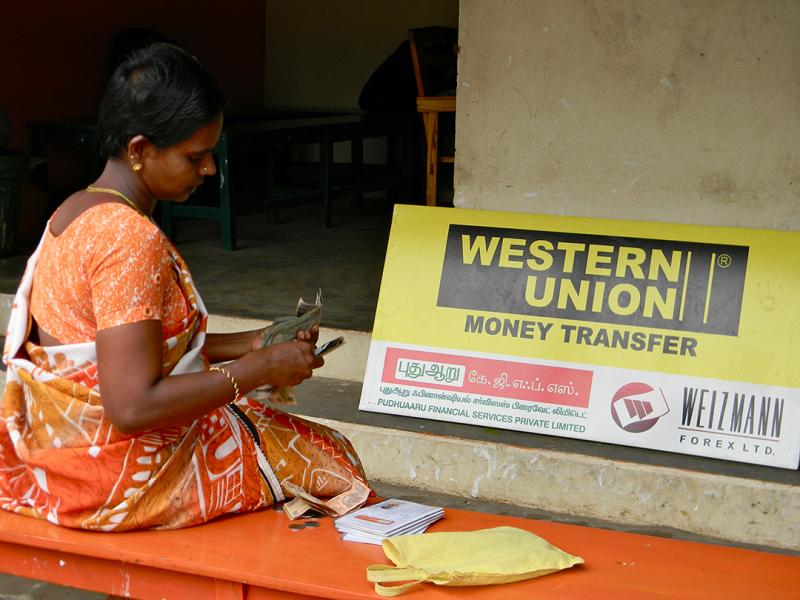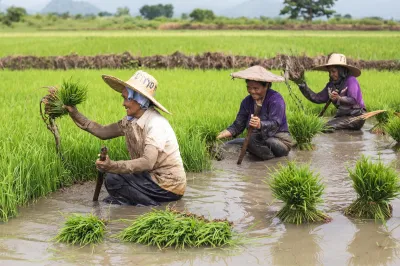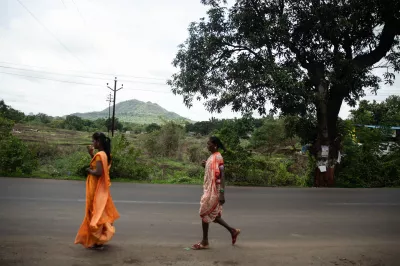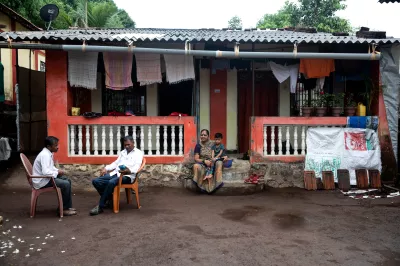Can Digital Cash Transfers Enable Financial Inclusion in India?
Digitizing India’s $100 billion subsidy machine is a massive task organized across ministries, departments, and 29 state governments. In 2013, the government had selected some of the major cash transfers to be shifted to an electronic system, and the process is gaining momentum with a renewed effort by the national government.
Global literature on government-to-person (G2P) payments suggests that although digitizing government flows has led to efficiencies for the system, the direct positive impact on financial inclusion is unclear. One of the reasons is that the policy experts designing electronic payment channels are working separately from those designing financial inclusion policies. There is also a matter of sequence. If the digital plumbing is already in place - such as a branchless banking network, a system of agents, or a robust authentication system - then the government can leverage that network for disbursing payments. Pakistan is illustrative of this. Easy Paisa agents, for example, are used to disbursing the Benazir Income Support funds to some of the poorest women in the country – but those agents already were in place and providing financial services.
In the case of India, the two digital pipes are being laid in parallel. There is a massive financial inclusion program by the government, called Jan Dhan Yojana, and an equally, if not more, massive initiative to digitize government flows to people, called Direct Benefit Transfer.

A similar experiment was attempted in South Africa between 2005 and 2011, where moving social grants from cash to electronic did help increase the uptake of the low cost “Mzansi” account being rolled out at the same time. About 60% of previously unbanked people signed up for a Mzansi account, although dormancy remained high in 2011 and banks continued to complain that the accounts were not profitable. For the government, the program was a money-saver: delivering cash payment cost R 35.92, an electronic payment cost much lower, R 13.50. Once shifted to the electronic system, beneficiaries get a text message that their account has been credited. South Africa is a unique example where beneficiaries can choose their provider through whom they can receive their payment. As field work showed, how well that choice is conveyed to the end-user is mixed on the ground, but in principle it is an empowering policy element.
We have enough data in India to show that account opening for the most part is doable, but it is account usage that is tough to achieve. A recent Intermedia study showed that only 25% of bank accounts in the country are active, even though about 45% of people own accounts. In a state like Bihar in central India, only 42% of the women are active bank account users. CGAP’s research in the state of Andhra Pradesh showed that 99% of the accounts opened for disbursing G2P were transacting once per month – to withdraw the total amount of the government payment.
Unlike in South Africa, where a centralized social security agency oversees delivery of all government benefits, each ministry in India runs its own programs and controls benefits associated with that program. The national government in Delhi controls policy design, budget, and transfer of funds, but India’s 29 state governments implement programs and ensure payment. Further complicating matters is the fact that each ministry executes drastically different types of social security programs. Here are just three examples of the variety of programs currently in place:
- The Ministry of Rural Development runs a wage guarantee scheme (MGNREGA) for lean farm periods so the ebb and flow of funds varies throughout the year;
- The Oil and Gas Ministry distributes a government subsidy for cooking gas. Earlier delivered in kind, this is now being moved to cash, where beneficiaries are provided with the subsidy amount rather than a subsidized gas cylinder;
- There are several pensions, including a national old age pension for senior citizens for Rs 200 a month, but several state governments add resources so a senior citizen in Andhra or Tamil Nadu gets Rs 1000 per month.
So coming back to the key question, given these challenges, can digital G2P flows enable financial inclusion?
Based on research and frequent engagement with all stakeholders involved in this space in India, there are several key elements to advancing financial inclusion through the use of digital cash transfers:
- At the state government level, there is room for a central department or agency that can oversee payments and to build the pipeline that all various departments can use. As an illustration, CGAP worked with the World Bank to establish a Direct Benefit Transfer Cell, in the Government of Jharkhand that is currently supporting enrollment of beneficiaries into an electronic database, set standards for providers, set up a grievance redress mechanism for beneficiaries.
- Bundling services at the village level: At the same time as the Indian government rolls outs its digital cash transfers and financial inclusion program, it is also driving e-government services that could enable citizens to file taxes, pay utility bills and apply for benefits electronically from the village itself. As an illustration, CGAP supported the World Bank and governments of Andhra and Telengana to design one-stop-shops that could combine the three services (financial + G2P+ E-government). Two thousand one-stop-shops are being rolled out across the states starting in January 2015. The rationale is that agent viability and quality will increase, multiple banks can use this platform, and customers will likely use their accounts more if they trust and see a range of benefits from that one transaction point. An RCT that will measure the impact of this experiment is also being launched simultaneously.
It will be an arduous next five years to build a robust digital plumbing that can reach every remote village in India as well as a system that is transparent, eliminates leakage and corruption, and can provide a range of services to the last mile. Despite the hurdles ahead, it’s a journey that several stakeholders in India are committed to achieving.
Read the related brief or explore the slide deck below.




Comments
There is a questionmark if
There is a questionmark if digital cash transansactions can enable financial inclusion. These transactions mainly cover subsidies which a poor beneficiary needs for subsistence. Thus these millions of accounts shall act as a receptacle with a hole at the bottom. The only advantage will be a cleaner and cheaper system for government. The insistence on Rupay Card without either, POS or ATMs in rural areas or capability of bank agents to accept these will act as another bottleneck. We are repeating past activities again as again. Government of India set up 100,000 customer service centres and many of these are still working. All public sector banks have entered into a common agreement with a government company representing these centres, so that these act as banks' agents with a common kiosk banking software. The point is that financial inclusion needs a focussed bank agent to provide inclusion activities covering deposit, remittances and credit. Around this agent we can create other services like digital cash transfers, or G2P services, etc. The sharp timelines, cash management issues, govt audit requirements, anxiety of beneficiaries all lead to critical focus on digital cash transfers as if these are an end in itself. Financial inclusion is a trust building activity involving slow and continuous interaction with excluded populations, and hence it entails higher costs. Digital cash transfers will give lot of movement but no progress. Ironically PSBs are being given a back seat, with more reliance on new players which will hurt the cause of financial inclusion in the long run.
Add new comment